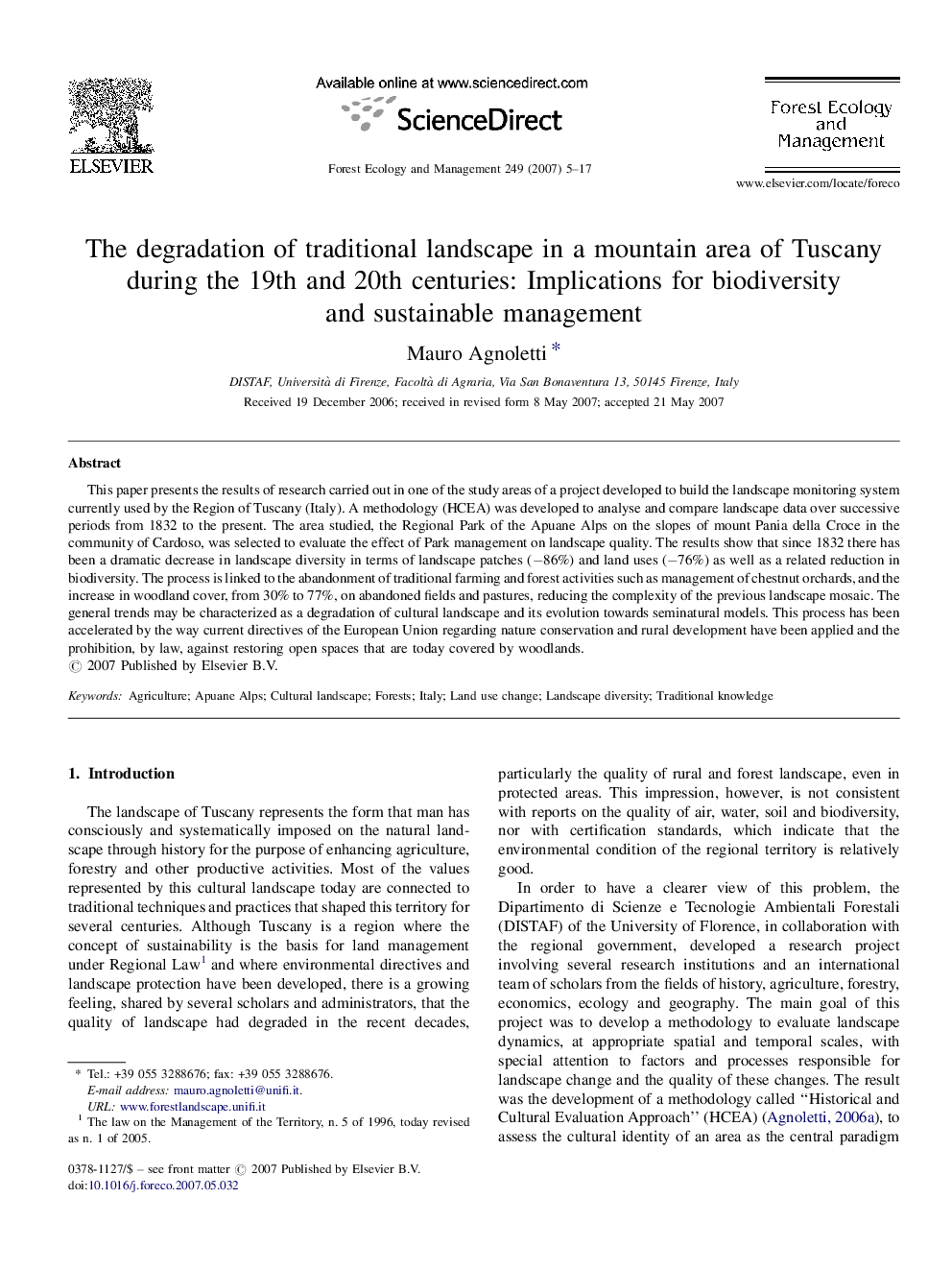| Article ID | Journal | Published Year | Pages | File Type |
|---|---|---|---|---|
| 90160 | Forest Ecology and Management | 2007 | 13 Pages |
This paper presents the results of research carried out in one of the study areas of a project developed to build the landscape monitoring system currently used by the Region of Tuscany (Italy). A methodology (HCEA) was developed to analyse and compare landscape data over successive periods from 1832 to the present. The area studied, the Regional Park of the Apuane Alps on the slopes of mount Pania della Croce in the community of Cardoso, was selected to evaluate the effect of Park management on landscape quality. The results show that since 1832 there has been a dramatic decrease in landscape diversity in terms of landscape patches (−86%) and land uses (−76%) as well as a related reduction in biodiversity. The process is linked to the abandonment of traditional farming and forest activities such as management of chestnut orchards, and the increase in woodland cover, from 30% to 77%, on abandoned fields and pastures, reducing the complexity of the previous landscape mosaic. The general trends may be characterized as a degradation of cultural landscape and its evolution towards seminatural models. This process has been accelerated by the way current directives of the European Union regarding nature conservation and rural development have been applied and the prohibition, by law, against restoring open spaces that are today covered by woodlands.
